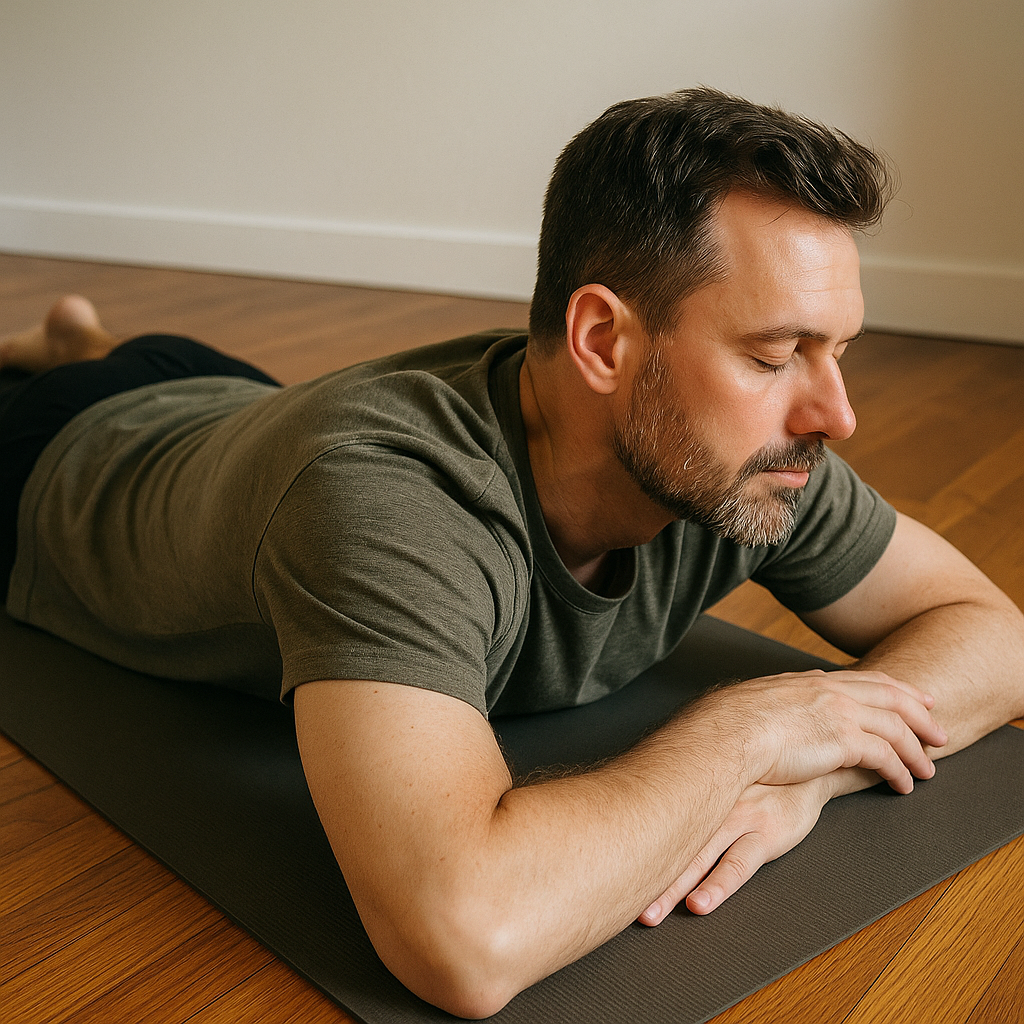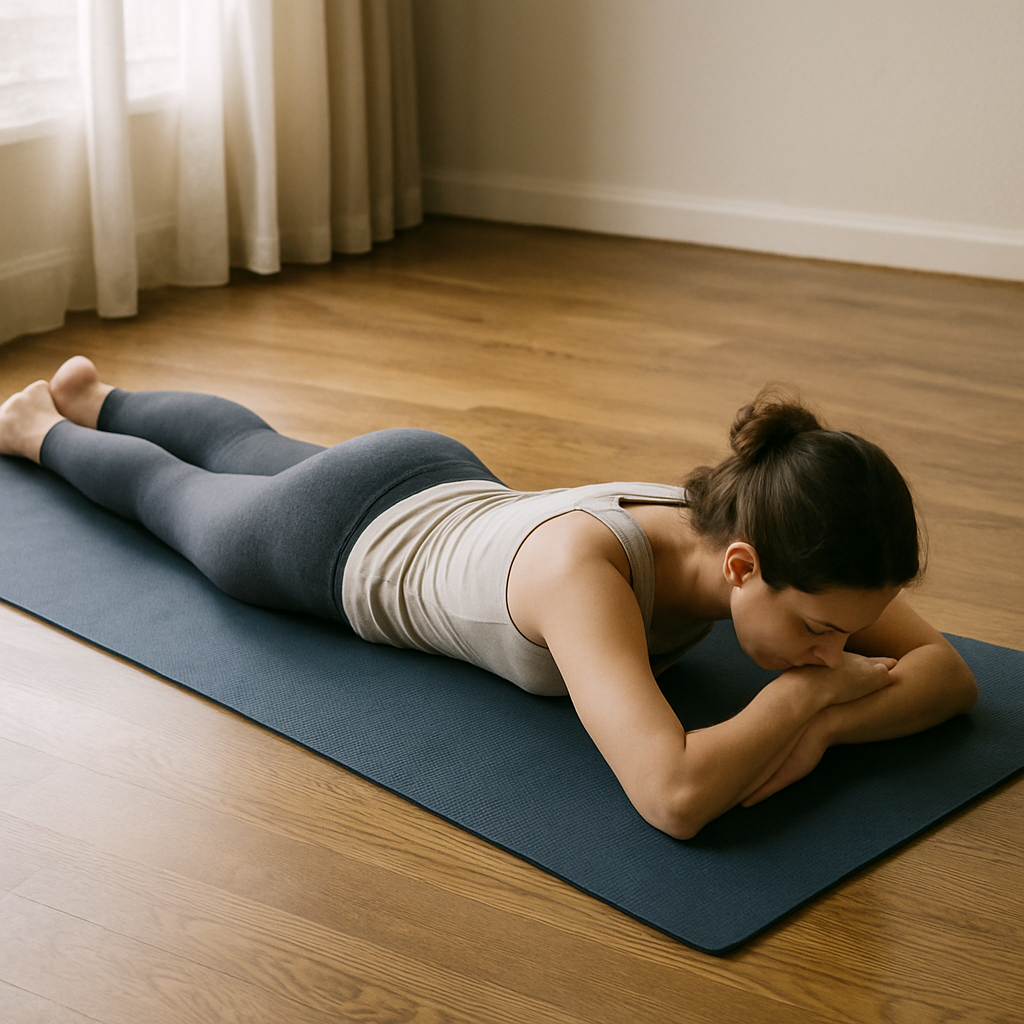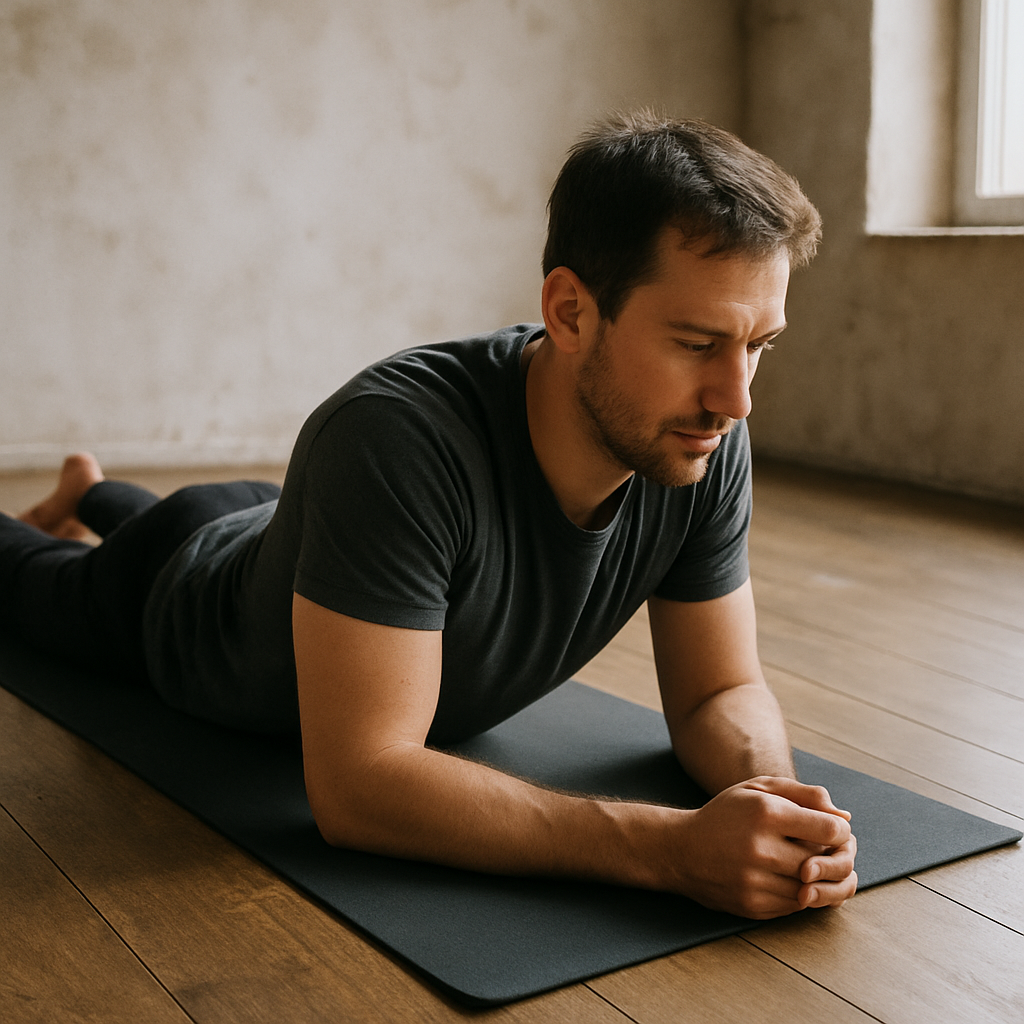Ask Ayurvedic doctor a question and get a consultation online on the problem of your concern in a free or paid mode. More than 2,000 experienced doctors work and wait for your questions on our site and help users to solve their health problems every day.
Shop Now in Our Store
What Is Makarasana: Meaning, Steps, Benefits, and Yoga Practice

If you’ve ever wondered, what is makarasana, you’re not alone. This deceptively simple yoga pose, often used during cool-downs or therapeutic sessions, offers powerful benefits for both the body and mind. Known for its restorative nature, makarasana yoga—sometimes called the crocodile pose—invites deep relaxation and healing. In fact, practicing the makarasana pose regularly can help relieve stress, improve posture, and soothe back discomfort. But there’s more to it than just lying down.
This article dives into the makarasana yoga pose in detail, covering everything from the makarasana meaning and symbolism to the steps of makarasana, benefits, variations, and safety precautions. Whether you’re a curious beginner or a seasoned yogi looking to fine-tune your form, you’ll find something valuable here. So unroll your mat, and let’s get started.

What Is Makarasana in Yoga?
Makarasana Meaning and Symbolism
Let’s start with the basics—makarasana comes from the Sanskrit word makara, which means “crocodile.” The suffix asana simply means “pose.” So together, makarasana translates to “crocodile pose.”
In yogic symbolism, the crocodile represents primal strength and stillness. Think of it as a creature that knows when to be active and when to rest deeply. This same essence is embodied in makarasana yoga, a pose that teaches us how to pause, breathe, and reconnect with ourselves.
Some traditional texts also associate the makara with mythical creatures, combining features of fish and terrestrial animals—symbolizing the balance between different energies within the body.
Makarasana Yoga Pose: Sanskrit Roots and Interpretation
The name might sound intense, but the pose itself is deeply calming. Unlike more active or acrobatic asanas, makarasana yoga is all about letting go. It’s a prone (belly-down) position where the chest is slightly lifted, and the head rests either on the hands or arms. In its full form, it relaxes the muscles along the spine, opens the chest gently, and promotes diaphragmatic breathing.
Sanskrit scholars say makarasana is not just a shape; it’s a state—of restfulness, inner awareness, and grounded energy.

How to Do Makarasana Step by Step
Steps of Makarasana with Alignment Tips
Want to know how to do makarasana correctly? Follow these simple steps to enter the pose safely and effectively:
-
Start by lying flat on your stomach. Legs should be extended straight back with feet hip-width apart. Toes can point out slightly.
-
Bring your arms forward and rest your head on your crossed forearms. Alternatively, you can cup your chin in your palms with elbows slightly wider than the shoulders.
-
Engage your lower belly lightly to support your lower back. Don’t tighten your glutes—keep the back relaxed.
-
Let your heels turn outward and allow your entire body to settle down.
-
Breathe slowly through your nose, focusing on long, steady exhalations.
That’s it! Stay in the pose for 2 to 5 minutes or longer if you're using it for relaxation.
Common Mistakes to Avoid While Practicing Makarasana
Even though this is a resting pose, people still manage to get it wrong (hey, we've all been there). Here are a few things to watch out for:
-
Tensing the lower back: Many beginners lift the chest too high, which tightens instead of relaxing.
-
Misplacing the elbows or hands: This can strain the shoulders or neck.
-
Holding the breath: Breathing should be natural. Don’t force inhales or exhales.
Also, don’t be surprised if your mind starts to wander or you get bored at first—makarasana takes some getting used to.

Benefits of Makarasana for Body and Mind
When practiced with intention and proper alignment, makarasana yoga offers a surprising range of benefits. While it may look like just a relaxing position, this pose works deep within your system, offering both physical and mental advantages that many overlook.
Makarasana Is Beneficial For Back, Lungs, and Relaxation
One of the top reasons people turn to makarasana yoga pose is to ease back pain. By gently stretching the spine and allowing the muscles around the lower back to soften, it creates space and relief where tension often lives.
People with respiratory issues like mild asthma also report improved breathing from consistent practice. Why? Because makarasana encourages diaphragmatic breathing, which means your belly—not your chest—does the work. This type of breath helps improve lung capacity, oxygen flow, and overall calmness.
And of course, it’s a great go-to when you need to slow down. The pose activates the parasympathetic nervous system—also known as the “rest and digest” mode—making it ideal for anyone feeling overwhelmed or burnt out. It’s especially helpful after a long day at work, or when your brain just won’t shut off.
“I started doing makarasana yoga every night before bed. My sleep improved within a week. No joke.” — a yoga teacher friend of mine (who also swears by herbal tea, for what it’s worth)
Benefits of Makarasana for Stress and Posture
If you spend all day hunched over a laptop, listen up. Makarasana is beneficial for your posture, especially the upper back and neck area. It encourages the spine to align naturally while relieving shoulder tension that comes from screen time.
This posture also gives the mind a chance to reset. Think of it as a full stop in your mental sentence—offering clarity, stillness, and emotional balance. Many therapists actually recommend it as part of yoga for stress relief or anxiety programs.
Some more lesser-known benefits of makarasana:
-
Can help reduce blood pressure when practiced regularly
-
Calms the heart rate after cardio or intense yoga flows
-
Supports digestive health through deep, belly-centered breath
Makarasana Variations and Modifications
No two bodies are the same, and luckily, makarasana comes with a variety of ways to customize it based on your needs and comfort level. Whether you’re dealing with stiffness, injury, or just want a gentler version, there’s an option for you.
Easy Modifications for Beginners in Makarasana Yoga
If lying flat on your stomach feels too intense, try placing a folded blanket or bolster under your chest. This props up the torso slightly and takes pressure off the lower spine.
You can also widen your legs more than usual or turn the feet outward for better grounding. Hands can rest one on top of the other instead of elbows flared out—whichever allows you to relax fully.
Also, don’t worry if your head doesn’t feel comfy at first. Use a thin cushion under your forehead or cheek, and switch sides halfway through your hold to keep the neck balanced.
Therapeutic Makarasana Pose for Specific Conditions
For people recovering from sciatica, gentle makarasana pose variations can offer relief when performed under guidance. The key is to avoid compressing the lower back—so modifications using props are super helpful here.
In therapeutic yoga, makarasana is also sometimes used as a transition pose between intense postures or as a grounding practice before meditation. It’s gentle enough to be practiced daily and powerful enough to support recovery from anxiety, fatigue, and even emotional burnout.

Makarasana Precautions and Who Should Avoid It
Even though makarasana yoga is a gentle, restorative pose, it’s not entirely risk-free. Like any physical practice, it’s important to listen to your body and understand if the pose suits your specific condition or not.
Here are a few key makarasana precautions to keep in mind:
-
Pregnancy: People in late pregnancy should avoid lying flat on the stomach, obviously. It can put unnecessary pressure on the belly and make breathing more difficult.
-
Recent abdominal surgery: Since makarasana involves belly-down pressure, those recovering from abdominal operations (like hernia surgery or C-section) should skip it until fully healed.
-
Neck issues: While the pose can actually help relieve neck tension, it can also aggravate it if you’re not aligned well. Try using props or turning the head gently side to side every few breaths.
-
Lower back injuries: Ironically, while makarasana is beneficial for general back discomfort, it can worsen certain spinal issues if done incorrectly or held for too long. If unsure, consult a yoga therapist or physio first.
As with all yoga, when in doubt—don’t force it. If you feel any sharp pain, pressure, or discomfort, ease out of the pose slowly. This is not the moment to “push through” anything.
Conclusion
So, what is makarasana really about?
More than just a makarasana pose, it’s a pause. A reset button. A moment where you give your body, breath, and mind permission to slow down and recalibrate. From improving posture and lung function to managing stress and back tension, the benefits of makarasana go way deeper than they seem at first glance.
If you’re new to makarasana yoga, start small. Explore the different makarasana variations and take note of what feels good in your body. Add props. Adjust your hands. Breathe. This pose isn't about "getting it perfect" — it’s about giving yourself a break.
Whether you're dealing with chronic pain, stress, insomnia, or just need to chill the heck out, adding makarasana to your routine might be the best decision you’ve made all week. (Well, besides reading this article 😉)
If you found this guide helpful, share it with your yoga buddies, or tag someone who seriously needs to learn how to relax. And don’t forget to follow for more deep dives into therapeutic yoga, posture tips, and mind-body wellness!
FAQs
Q: How do I do makarasana correctly at home?
A: Start by lying on your belly with your legs extended, feet hip-width apart. Rest your forehead on your hands or forearms. Keep your chest lifted gently and focus on slow, relaxed breathing. Props like blankets or cushions can help adjust the height and comfort level.
Q: What are the common mistakes in makarasana pose?
A: People often tense their lower back or lift the chest too high. Another common mistake is placing the arms in an uncomfortable position, leading to neck strain. Also, skipping breath awareness takes away half the benefit!
Q: Is makarasana good for back pain?
A: Yes—but with a caveat. Makarasana is beneficial for general back discomfort and tension caused by poor posture or stress. However, it may not be suitable for acute injuries or herniated discs without medical approval.
This article is checked by the current qualified Dr Sujal Patil and can be considered a reliable source of information for users of the site.

